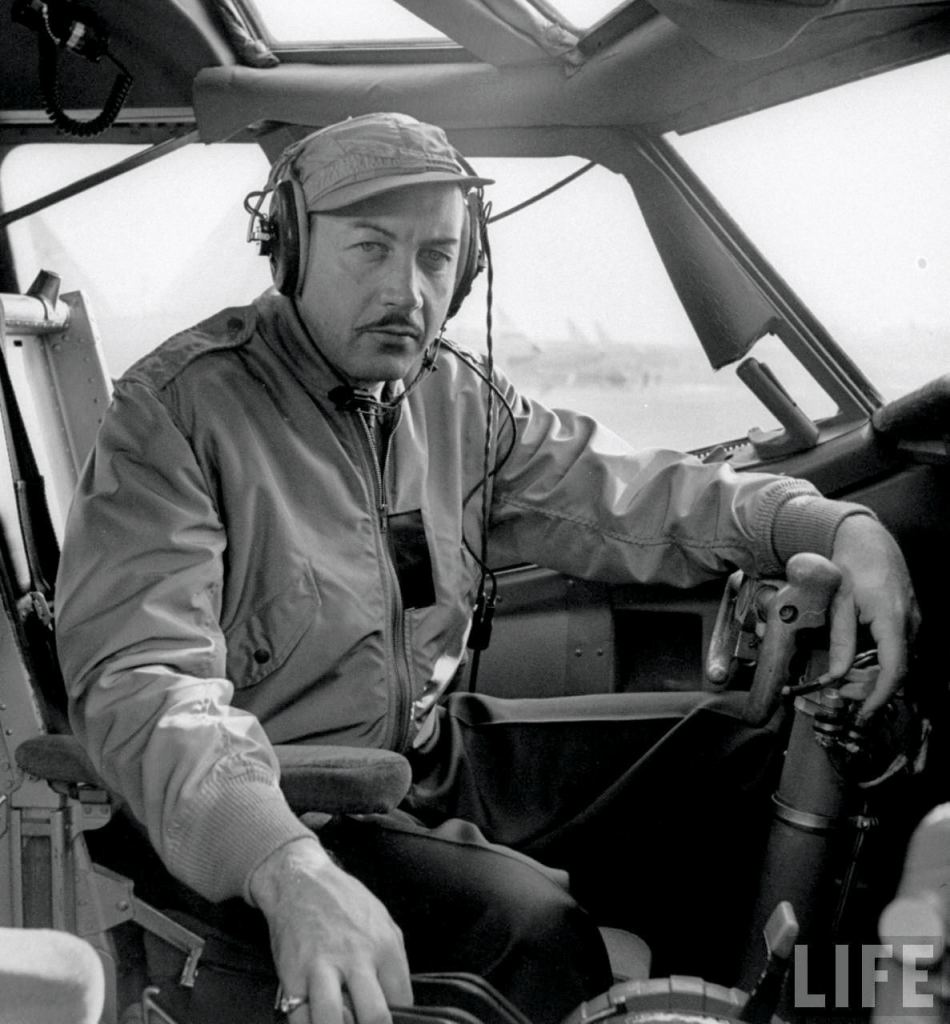

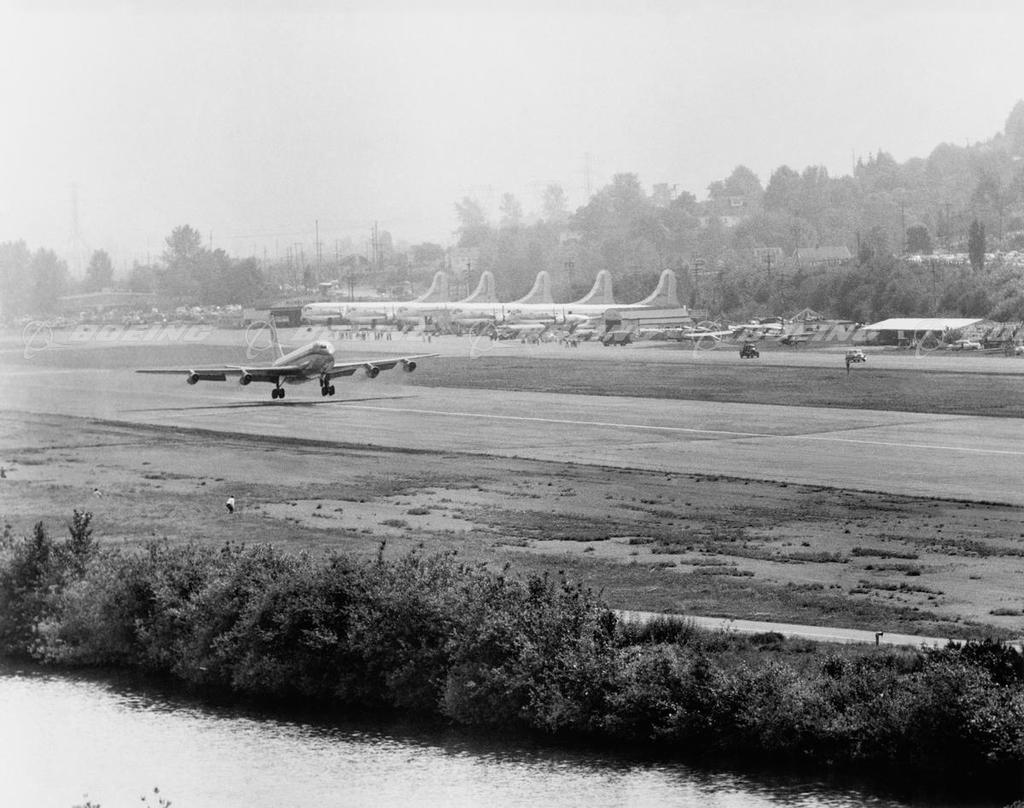
Tex Johnston wrote about the first flight of the “Dash Eighty” in his autobiography:
We completed our before-takeoff checklist, Dix worked the tower, and we were cleared for takeoff. I called the theodolite station: “Dash 80, Johnston, stand by, brake release on the count of three.” At full throttle, the four Pratt and Whitney engines at 100-percent power, tail-pipe temperatures and oil pressure on the money, I said, “One, two, three,” and released the brakes. The airplane leaped forward and accelerated rapidly. We obviously would be airborne by midfield. As airspeed passed the calculated V1 speed, I applied back elevator. The nose lifted off. Dix called 130 mph, and we were airborne.
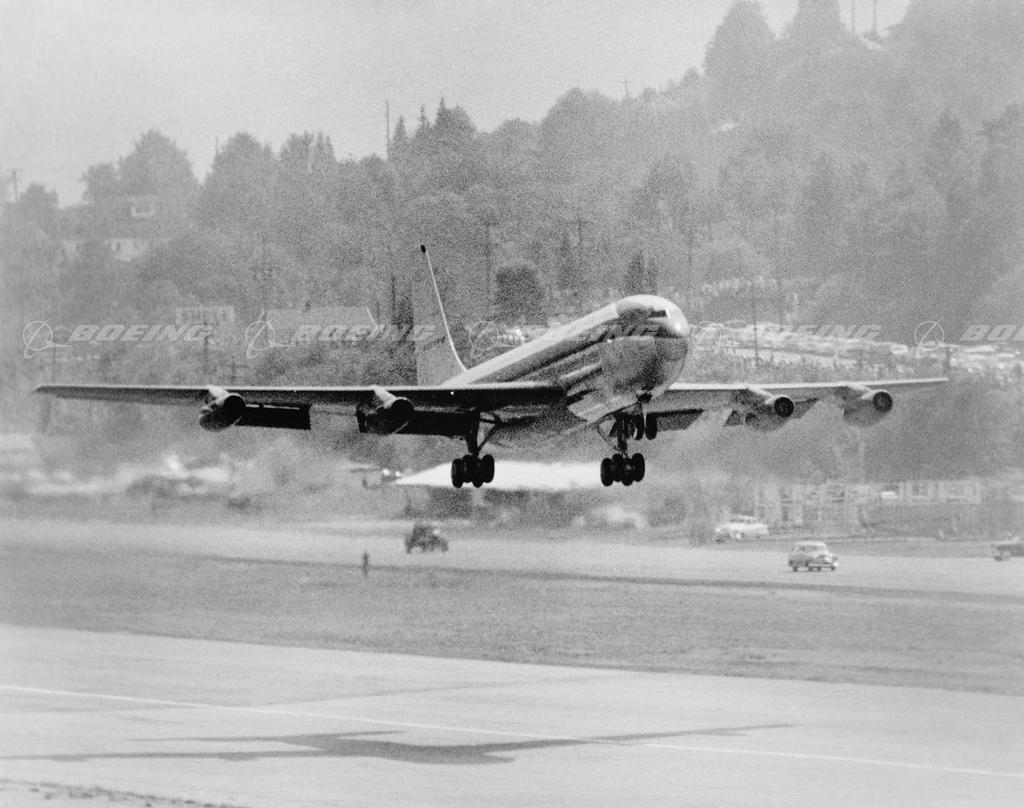
Eyeballing the airspeed, I continued to increase the climb angle to avoid exceeding the flap-down placard limit of 225 mph. We were at 1,200 feet as we climbed past end of the runway. Dix commented, “Is this thing going to climb straight up?” Over Lake Washington, I throttled back to climb power, sure that the spectators had never before witnessed takeoff performance and climb attitude like that. . . .
—Tex Johnston: Jet-Age Test Pilot, by A.M. “Tex” Johnston and Charles Barton. Smithsonian Books, Washington, D.C., Chapter 15, Pages 542–543.
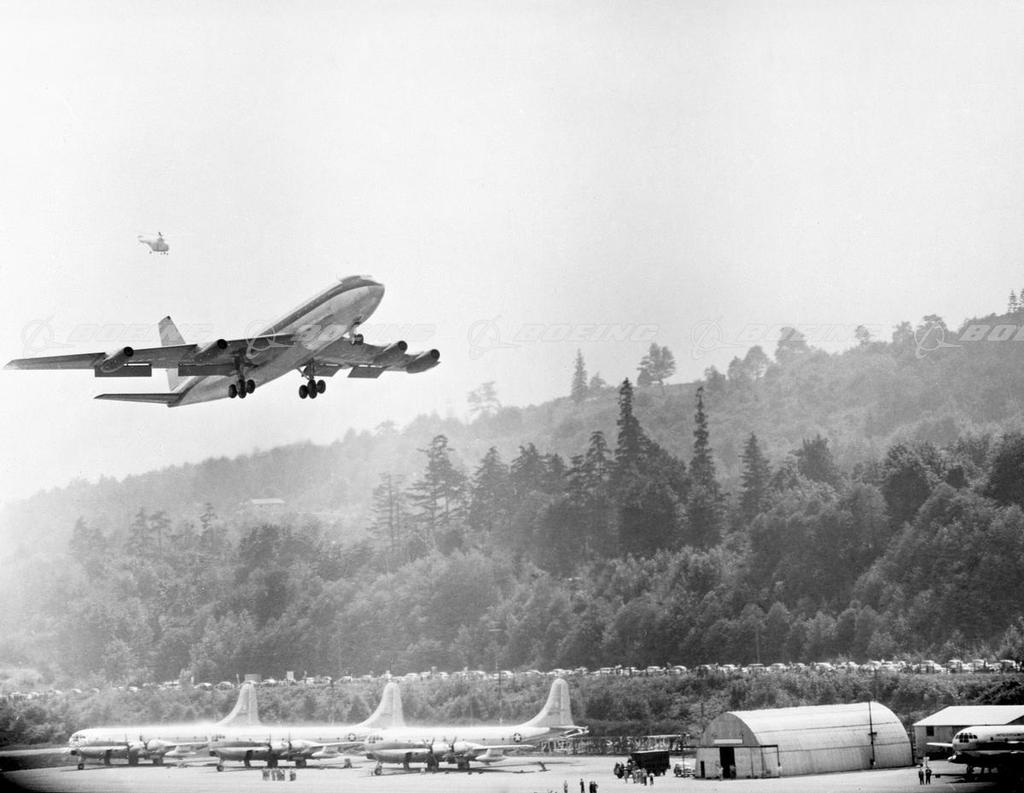
For the next 2 hours, 24 minutes they performed high- and low-speed handling tests before landing at Boeing Field, Seattle. When Johnston was asked how the “Dash 80” flew, he replied, “She flew like a bird, only faster.”
Boeing had risked $16,000,000 in a private venture to build the Dash 80 in order to demonstrate its capabilities to potential civilian and military customers, while rivals Douglas and Lockheed were marketing their own un-built jet airliners. Put into production as the U.S. Air Force KC-135 Stratotanker air refueling tanker and C-135 Stratolifter transport, a civil variant was also produced as the Boeing 707, the first successful jet airliner. Though they look very similar, the 707 is structurally different than the KC-135 and has a wider fuselage.
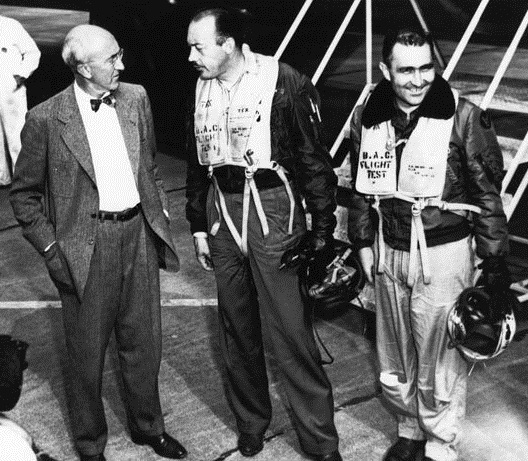
The Boeing 707-320B Stratoliner airframe was used for the military E-3A Sentry AWACS command-and-control aircraft, the E-6 Mercury airborne command post, and other versions for reconnaissance, weather, and communications.
820 of the C-135 series and 1,010 Model 707 aircraft were built from 1957–1979.
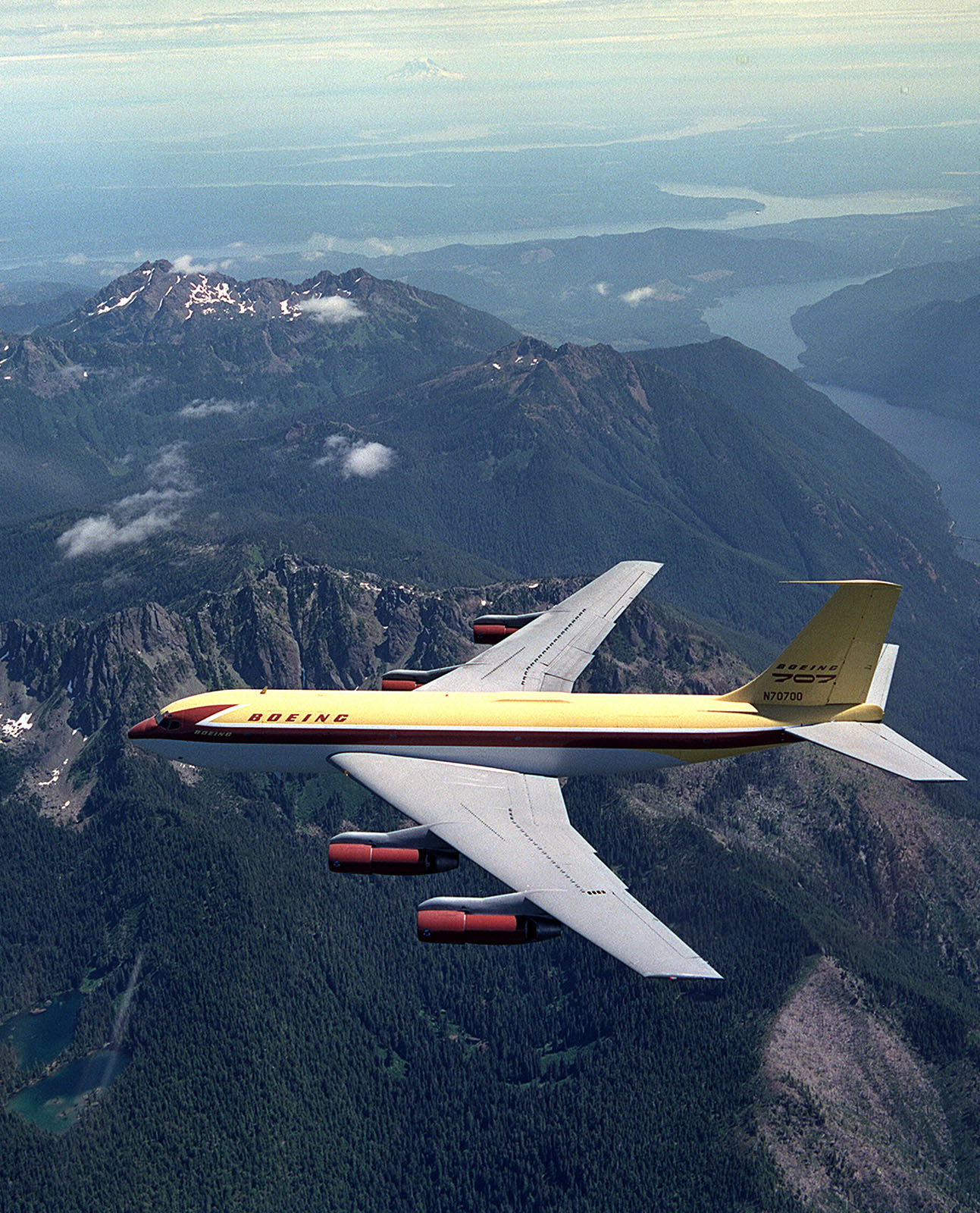
The prototype Boeing Model 367-80 was operated by a pilot, co-pilot and flight engineer. The airplane’s wing was mounted low on the fuselage and the engine nacelles were mounted on pylons under the wing, as they were on Boeing’s B-47 Stratojet and B-52 Stratofortress. The wings and tail surfaces were swept to 35°. The Dash 80 was 127 feet 10 inches (38.964 meters) long with a wingspan of 129 feet, 8 inches (39.522 meters) and overall height of 38 feet (11.582 meters). Its empty weight was 92,100 pounds (41,775.9 kilograms) and loaded weight was 190,000 pounds (86,182.6 kilograms).
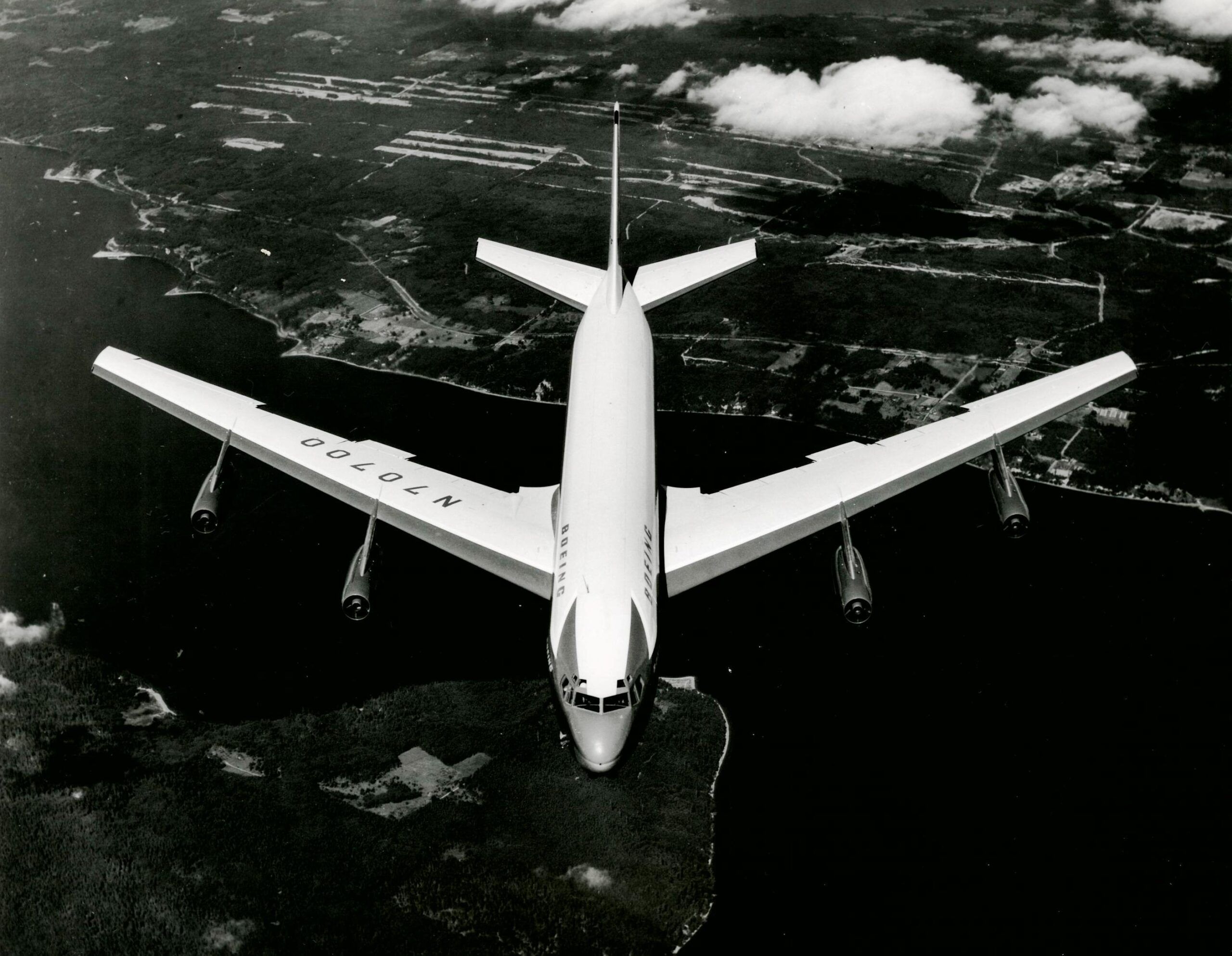
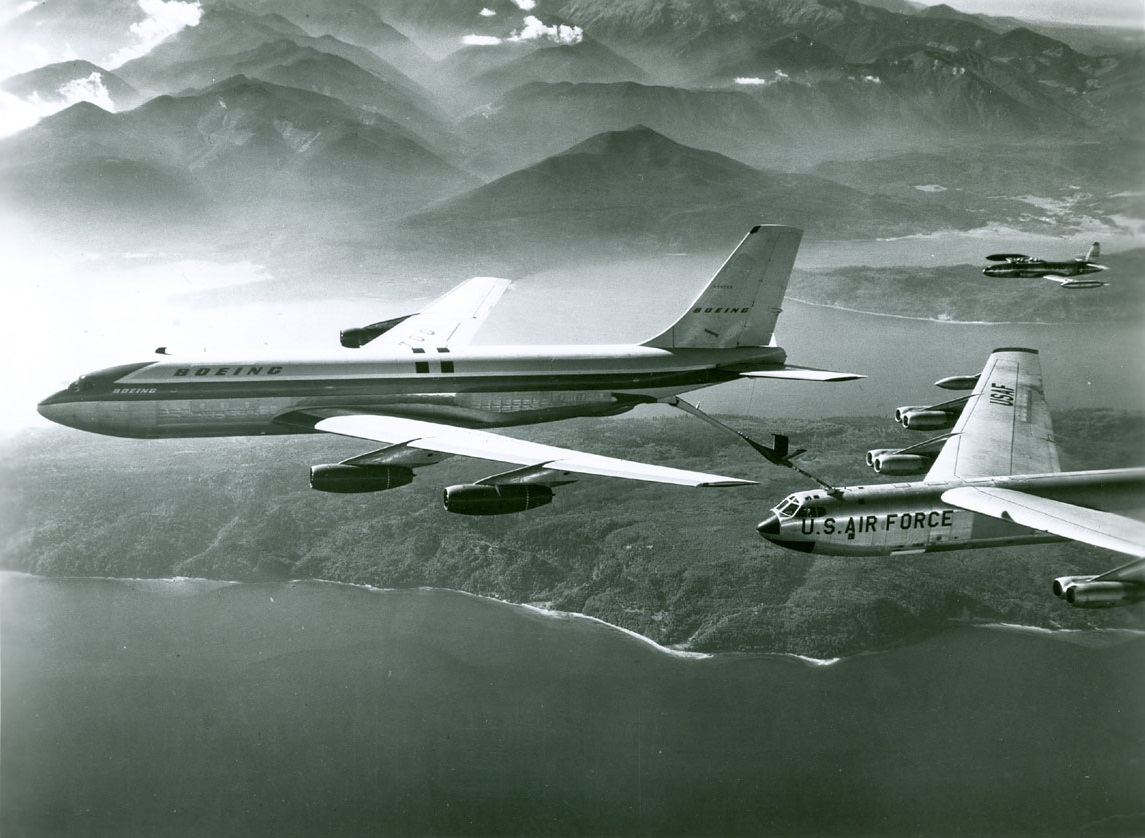

These gave the 367-80 a cruise speed of 550 miles per hour (885 kilometers per hour) and a maximum speed of 0.84 Mach (582 miles per hour, 937 kilometers per hour) at 25,000 feet (7,620 meters). The service ceiling was 43,000 feet (13,106 meters). Its range was 3,530 miles (5,681 kilometers).
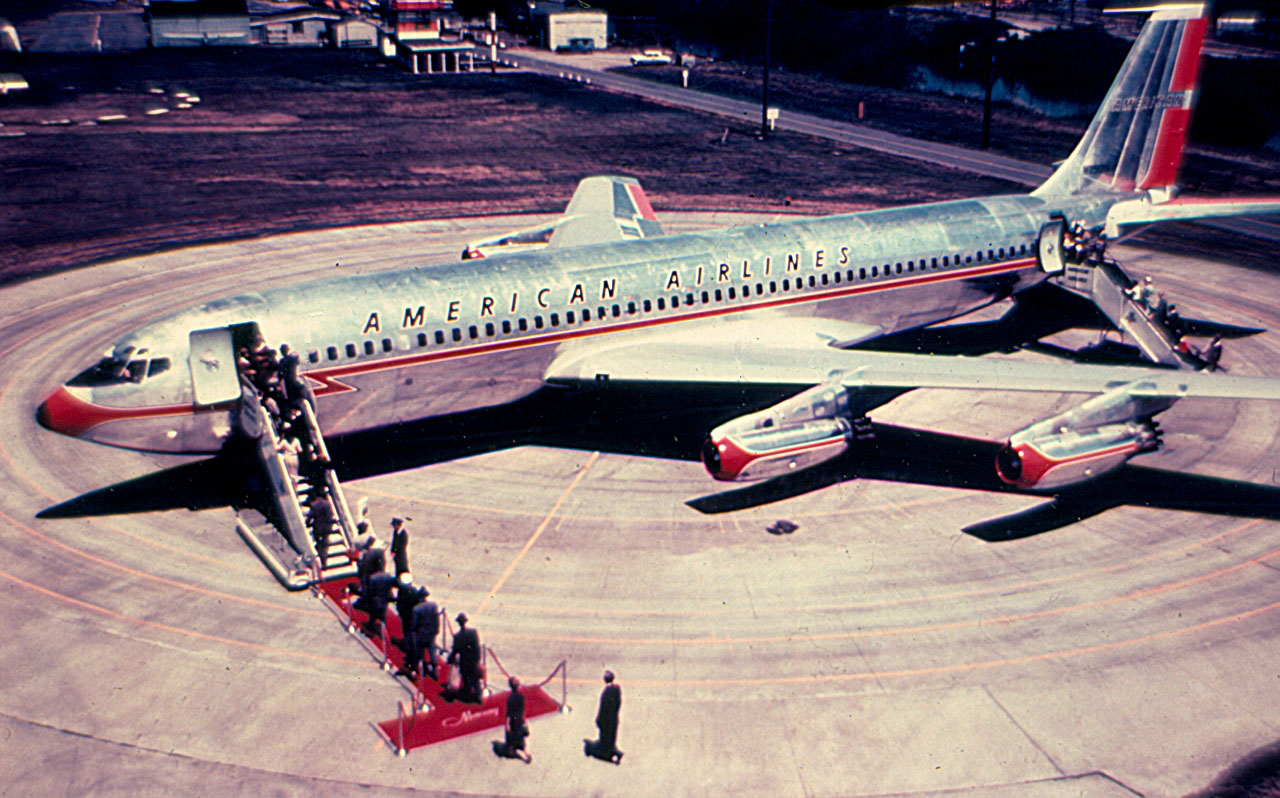
Boeing continued to use the 367–80 for testing, finally retiring it 22 January 1970. At that time, its logbook showed 2,346 hours, 46 minutes of flight time (TTAF). It was flown to Davis-Monthan Air Force Base, Tucson, Arizona, and placed in storage. In 1990, Boeing returned it to flyable condition and flew it back it to Renton where a total restoration was completed. Many of those who had worked on the Dash 80, including Tex Johnston, were aboard.
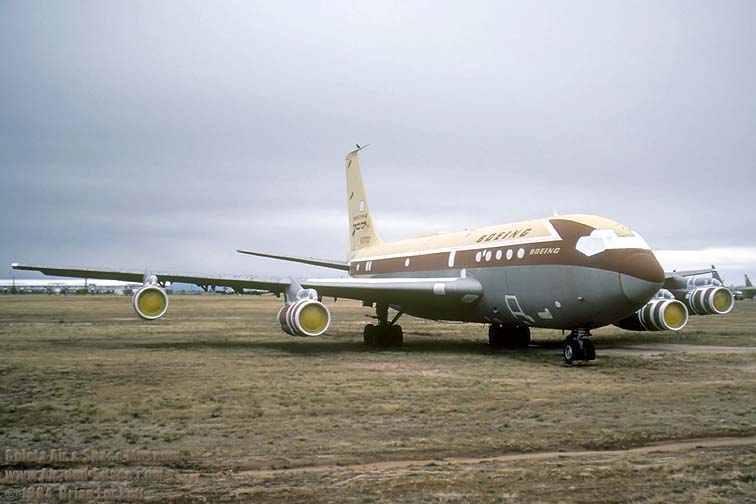
The pioneering airplane was presented to the Smithsonian Institution and is on display at the National Air and Space Museum, Steven V. Udvar-Hazy Center. The Boeing 367-80 was designated an International Historic Mechanical Engineering Landmark by the American Society of Mechanical Engineers.
820 of the C-135 series and 1,010 Model 707 aircraft were built from 1957–1979.
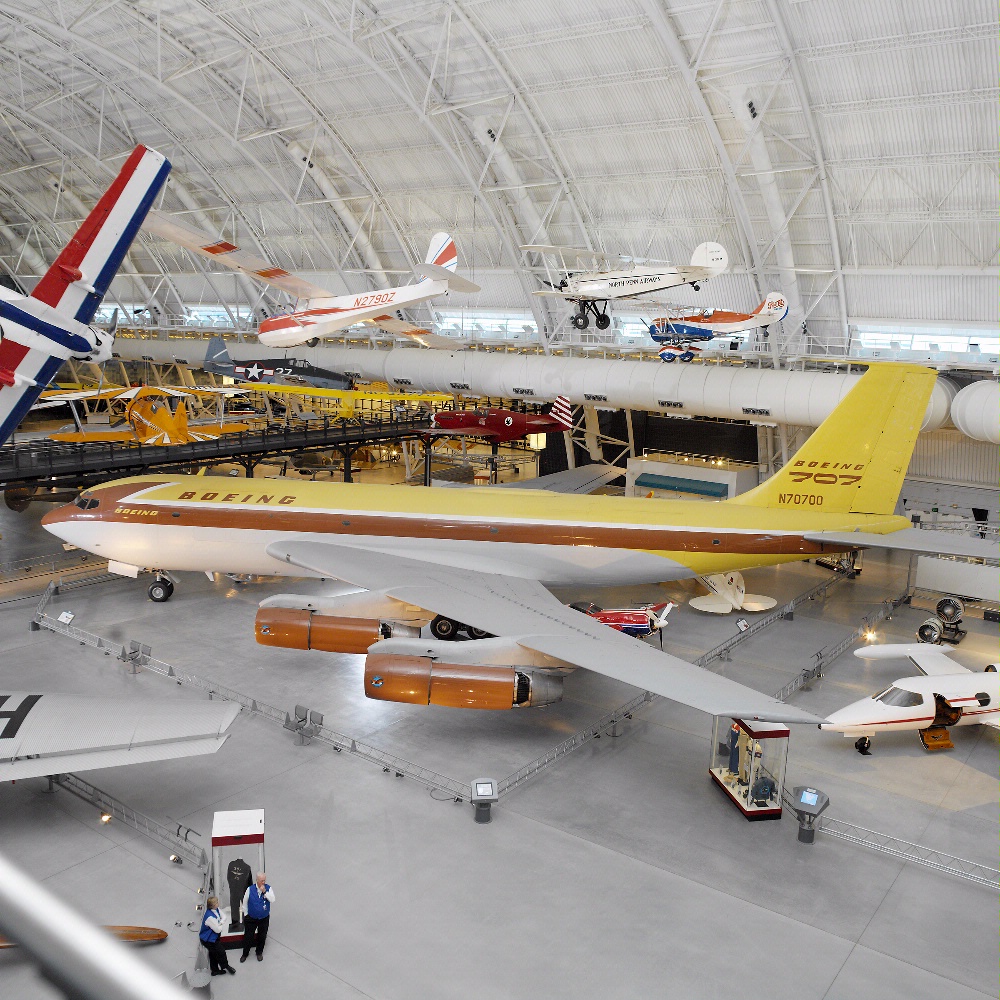
© 2020, Bryan R. Swopes
Of note, is how Tex attempted to ‘sell’ these airplanes. https://youtu.be/Ra_khhzuFlE
Yep. 🙂
Bryan, I still have your hammer from Evergreen in Roanoke.
Hi, Darrell! How the heck are you???
It’s true they made a lot of variants of the -135, KC, RC, EC, WC, to name a few, but, if it doesn’t end in -135, it’s a 707. There is a difference. The E-3 and E-6 are 707s, not 135s
Thanks for thehe correction. Of course, the Dash 80 was a “707”, too. The E-3 and E-6, et al., are C-137s. I’ve made a quick correction, but will need to re-write that passage for greater clarity when I get time. Thanks, Mark.
The E-3 and E-6 were never C-137 aircraft. They were purpose-built aircraft that were derived from the commercial 707-320, but they were brand-new, zero time airframes manufactured solely as the E-3 & E-6 (The only two exceptions were the “brassboard” AWACS prototypes that were used in the fly-off between the two competing radar systems. Those two were modified commercial 707s that were formerly in service with civilian airlines. After testing, they were totally remanufactured to final E-3 specs) I was involved with AWACS test & evaluation from 1975 – 1985
Thanks for that clarification, James. I appreciate the information.
Appreciate your insight and knowledge Mr Cottom. Please drop me a line.
I flew aboard EC-135’s for 5 years while stationed in the Air Force aboard CINCPAC Airborne Command Post 1965 to 1970
Awesome Airplane , Lots of them still flying
I was there after you Blue Eagle from 1971-1975 Boom Operator. Crew 02
Hey Bryan
Typo after Johnston’s narration:
—Tex Johnston: Jet-Age Rest Pilot
Thank you, Terry. I fixed it. 🙂
When Boeing still built Great airplanes.
In the sixties I grew up within earshot of Kansas City Municipal Airport. With the Missouri River at the north end of the field and downtown KC (and the Missouri River) at the south end, it was a challenge for the Constellations and DC-6s to get in and out. The early jetliners had it even worse.
Often we would go down to Muni to watch the TWA water wagon (water injection) 707s take off. Quite an experience with more noise than would ever be tolerated today and billows of black smoke (ditto). These early jets barely cleared the river dikes. This craziness went on for several years until Trans World retrofitted with more powerful engines, and even then each takeoff was a close call.
Now I live within earshot of Muni’s replacement, Kansas City International Airport. Barely know aircraft operations are in the area. I miss the old water wagons.
TDiA remembers, circa 1959, traveling to Los Angeles International Airport with my entire family to see my grandfather off on a flight from LAX to Omaha, Nebraska. It was a bright, sunny, Sunday morning. He flew aboard a Boeing 707. I can recall the heavy black exhaust that covered the airport. The entire area surrounding the airport was heavy with the smell of kerosene. I also remember, that my grandfather, like the other male passengers, was dressed in a business suit and wore a fedora. . . How times have changed!
“820 of the C-135 series and 1,010 Model 707 aircraft were built from 1957–1979.”
Eh … I suppose technically the “707” ceased production in 1979, but it was actually a bit later than that. The production line remained open until 1991 manufacturing E-3 and E-6 airframes, which were essentially 707-320with some military mods.
I served in both US and NATO E-3 AWACS units from 1982 until 1992 (software guy, not pilot). An E-3 pilot friend of mine went to the JSTARS Joint Program Office in late 80s said the JPO bought the very last 707 airframe ever built and traded it to an Irish (I think) airfreight company for 5 used 707 airframes to be converted into E-8 JSTARs. The JSTARS fleet was built entirely on used 707s as far as I can recall. I’ll bet configuration management was interesting.
Boeing offered to keep the production line open to build new E-8s (or whatever) if the JPO would pay for it, but the JPO declined and stuck with used planes.